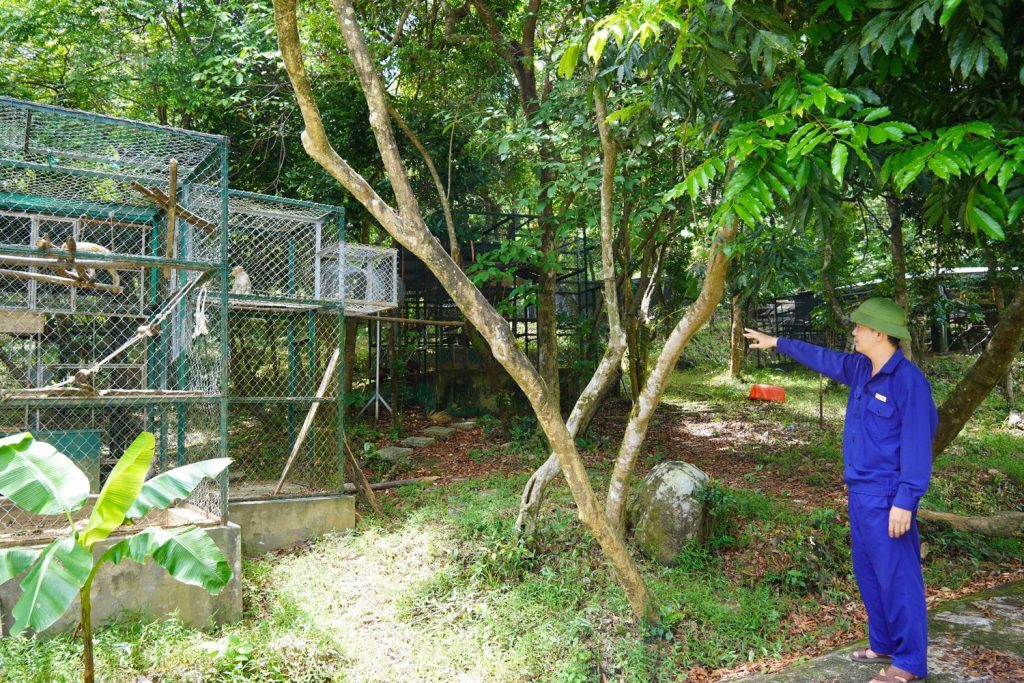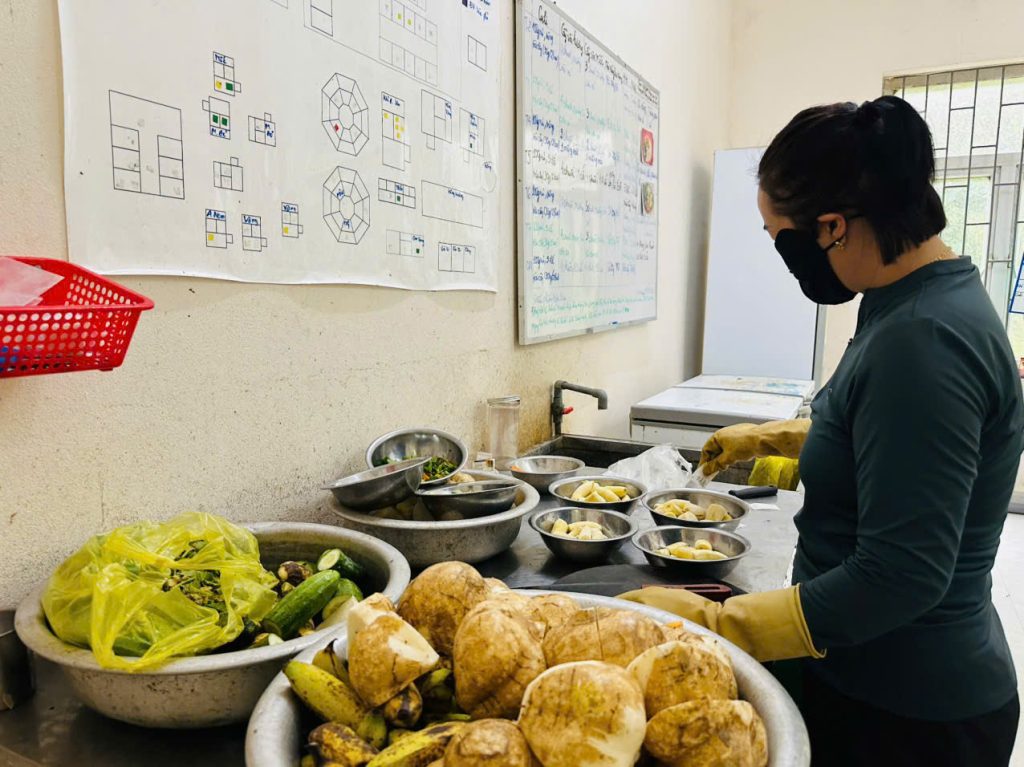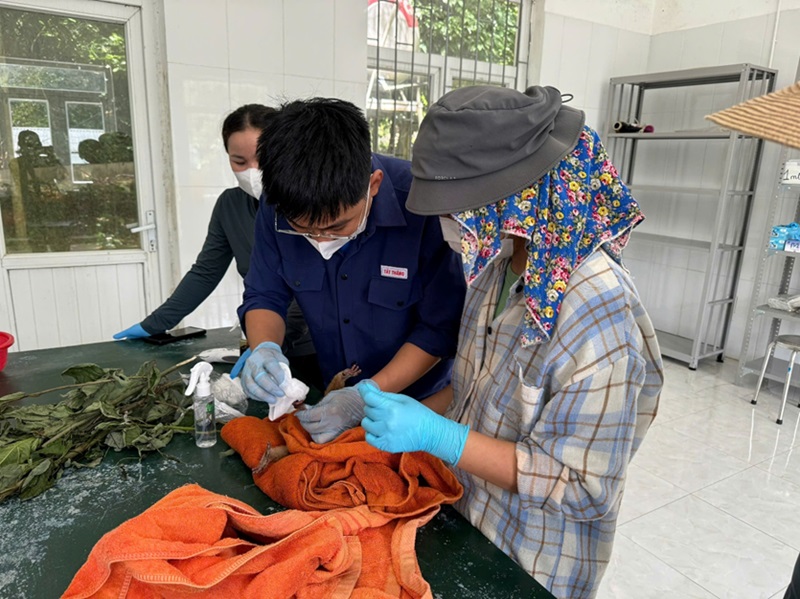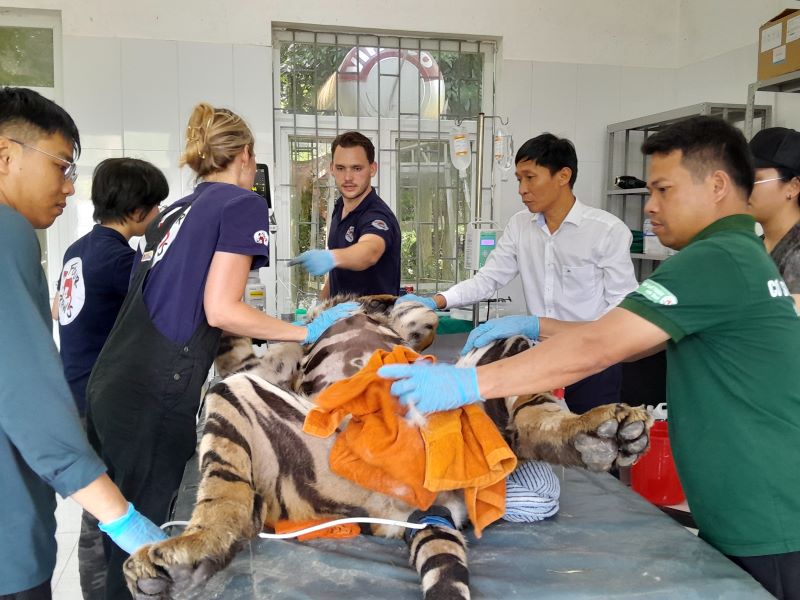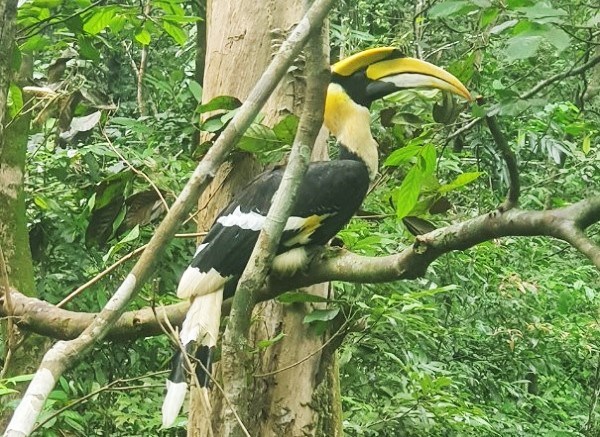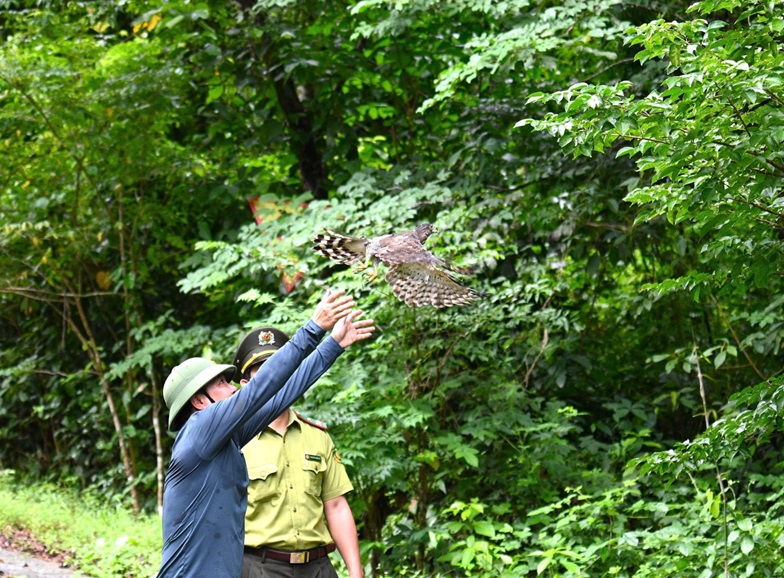As the first rays of sunlight filter through the ancient forest canopy of Phong Nha – Ke Bang, the Wildlife Rescue Center begins a new day. Nestled in the serene mountains, this sanctuary is home to dozens of animals once wounded, hunted, or trafficked, now receiving care and rehabilitation in preparation for their return to nature.
A staff member introduces the animal care and monitoring area
The call of life
The day starts with staff checking the health of each animal, carefully observing their behavior to detect any unusual signs. Next comes cleaning the enclosures, followed by meal preparation—a meticulous and responsible task. Each species has a unique diet: ripe fruit for monkeys and birds, fresh meat for carnivores. Every detail is calculated to match the ecological needs and recovery process of each animal.
A staff member preparing meals for rescued wildlife
From the enclosures echo lively sounds: the chatter of monkeys calling to their troop, the deep calls of hornbills seeking mates. Amid this chorus, one can sense the return of vitality, the resilience shining in the eyes and movements of once-traumatized animals.
Silent checkups
Newly rescued animals undergo isolation and quarantine, where veterinarians provide special care. Some bear wounds from steel traps, others are exhausted after trafficking, while some remain stressed after being torn from the wild. Every wound is disinfected, every injection delivered with precision.
A veterinarian treating injuries on a newly rescued pygmy loris
In March 2022, the center received seven Indochinese tigers from Pu Mat National Park (Nghe An). Each weighed between 56–64 kg at the time. Thanks to dedicated care, the tigers have grown healthy and strong, with the largest now weighing over 150 kg.
Experts and veterinarians conducting health checks on the tigers
This work requires patience, expertise, and compassion. Many animals remain wary or aggressive, clinging to their wild instincts. Yet with persistence and care, they gradually calm, adapt, and recover. Every step forward—from a langur eating again to a pangolin opening its eyes after days of weakness—is a rewarding milestone for the rescue team.
Spreading a love for nature
Beyond its rescue mission, the center welcomes scientists, students, volunteers, and visitors. Through stories of rehabilitation and release, people gain deeper appreciation for conservation.
A great hornbill being cared for at the Rescue Center
Inspiring stories abound: a rhesus macaque regaining strength before returning to the wild; a pair of great hornbills—an endangered species—finding safe habitat again after months of care. Each journey is a testament to unyielding conservation efforts.
A faith in return
As dusk falls over the limestone mountains, another day at the Rescue Center comes to a close. Watching monkeys play and hearing birdsong resonate through the vast greenery, one feels the profound value of the work carried out here. Behind every rescued animal stands the tireless dedication of the staff at the Rescue, Conservation, and Species Development Center of Phong Nha – Ke Bang National Park—alongside community support and an enduring belief: nature’s song of life will continue, if only humanity respects and protects it.
A rescued animal released back into the wild after rehabilitation
The Phong Nha – Ke Bang Wildlife Rescue Center is more than a “place of revival” for vulnerable creatures—it is a symbol of the bond between people and nature. For every visitor, the experience carries a lasting lesson: protecting wildlife is also protecting ecological balance, and safeguarding the shared home we all depend on./.
My Hanh

